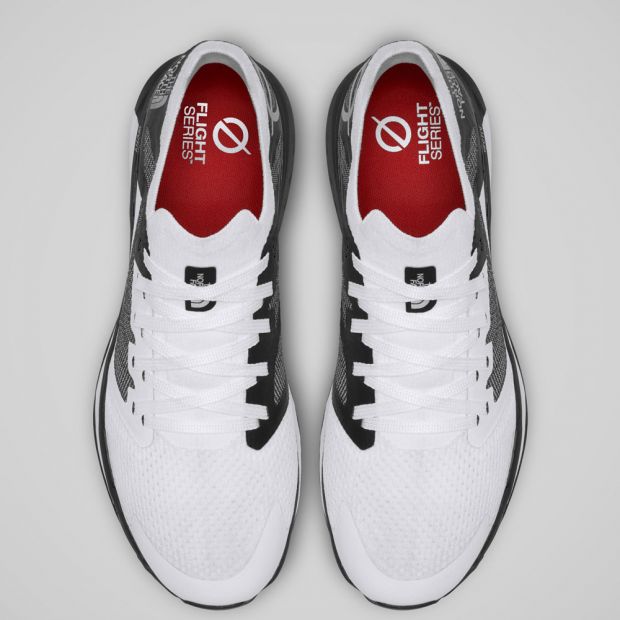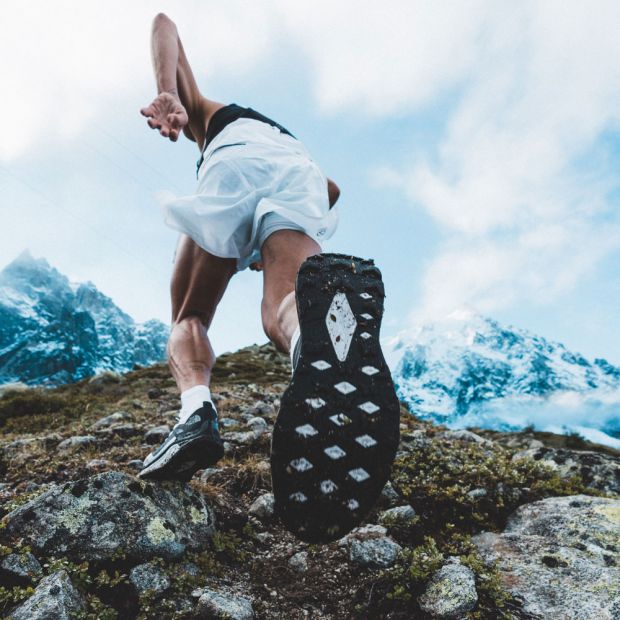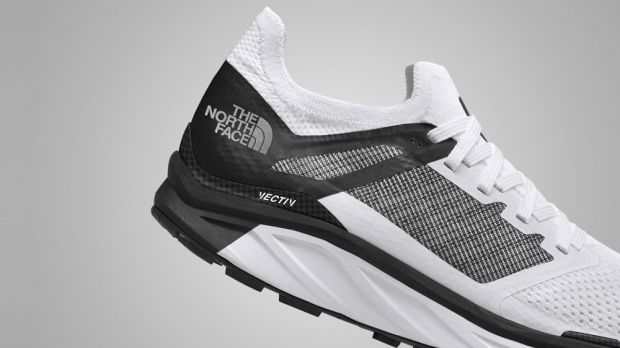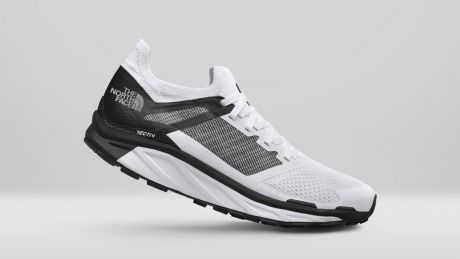Our Verdict
The Flight Vectiv brings key tech from road racers to a trail shoe in the form of a carbon plate and rocker. It works a charm in certain conditions, but is expensive and struggles in any kind of mud.
For
- Efficient ride that will help in long races
- Carbon plate and rocker
Against
- Outsole lacks traction
- Upper caused some pain
- Expensive for a trail shoe
You can trust Coach
For better or for worse, carbon plates have changed the road racing landscape. Nike unleashed the tech with the Vaporfly 4%, and since then every brand has been playing catch up – in 2020 most launched a carbon plate racing shoe.
It was only a matter of time before the tech came to trail-running shoes in some form, and The North Face’s Flight Vectiv is the first attempt at a carbon plate trail shoe.
It bears many of the hallmarks of a carbon plate road shoe. There’s a large stack of cushioning made from a lightweight, high-rebound foam, while the midsole has a rocker design to help you roll through your footstrike. Then there’s the carbon plate, which sits in the midsole to provide extra propulsion.
However, there are also some differences, because some of the signature features of carbon plate road racers simply wouldn’t work on the trails. For one, the foam is not soft and squishy like that on a Vaporfly, because more stability is required on trails. The North Face has also added a panel made with Kevlar into the upper around the midfoot to increase stability, and there is a toe cap on the upper to protect you from stray rocks and branches.

The outsole is also different from a road racer’s, with 3.5mm lugs designed to provide grip on mixed terrain. In my experience these lugs work well on harder trails, even when wet, but they don’t have enough purchase to run fast on slick, muddy ground where you’d want a deeper, stud-style outsole.

On firmer trails the Vectiv performs well. While its ride has a far more natural feel than the bouncy, propulsive experience of running in some of the carbon plate road shoes, I did feel the rocker moving me through my stride smoothly, and the shoe felt protective without being sluggish at all.
My first run was 25km at a fairly easy pace over mixed terrain in a forest, with plenty of harder sections as well as some deep mud, which was not ideal in the Vectiv given its grip (or colour). While the run was fairly unremarkable, I did feel noticeably fresher at the end of it than I have done in the past on the same route in standard trail shoes.
I sped up on my second run, with the result that I was forced off my intended route on to harder ground and even some road because the Vectiv doesn’t have the grip for speed on muddy trails in the winter. That’s not a complaint though – this is a shoe built for long races on hard and rocky ground, not boggy slogs.
See related
While it isn’t a very light shoe at 297g in my UK 9 – carbon road shoes would come in much closer to 200g, or a shade under – the Vectiv feels much lighter than that and, in the second half of a 15km run, helped me keep up a pace of 3min 45sec/km comfortably.
However, towards the end of the second run in the shoe I noticed some pain on the side of my right foot just under my ankle. The next day I ran in a different shoe and this soreness took some time to go away, but it did fade, so I thought all was well. Unfortunately when I went to run in the Vectiv again, the pain came back with a vengeance and after a few paces I had to swap it for another shoe. The pain disappeared as soon as I did and didn’t return.
I have no idea what caused this pain, which it didn’t come up at all on my first and longest run in the shoe. There is a clip that runs around the heel to provide stability that’s in roughly the right place to cause the problem, but a lot of shoes have similar features and I’ve had no problems of this sort before.

Other people I know who are testing the shoe haven’t had this problem, and it does perform well in long trail runs. It’s particularly fun to run downhill in, protecting the legs from the impact of pounding down a slope while also propelling you forwards even faster.
I have other concerns. It’s not a terrific short-distance racer since the benefits of a carbon plate and a rocker design are less pronounced on uneven ground compared with the road, where your running gait stays pretty much the same whatever the distance and you can really feel any efficiency gains from shoes. If you’re dodging rocks and tree roots, you won’t get as much of a boost in efficiency – you’d be better off with a lighter shoe in those circumstances.
It’s also £180, which is relatively cheap compared with carbon plate road racers, but very expensive for a trail shoe. Unless you are tackling long races on harder trails, which is where the shoe is likely to perform at its best, the benefits you gain from the Vectiv are unlikely to be worth that outlay.
So even discounting the pain I felt in my foot when using the shoe, questions remain. However, its very existence is an exciting development and there’s no doubt that in certain circumstances the Vectiv does capture some of the magic of a carbon plate road shoe.
Buy from The North Face | £180

Nick Harris-Fry is a journalist who has been covering health and fitness since 2015. Nick is an avid runner, covering 70-110km a week, which gives him ample opportunity to test a wide range of running shoes and running gear. He is also the chief tester for fitness trackers and running watches, treadmills and exercise bikes, and workout headphones.

